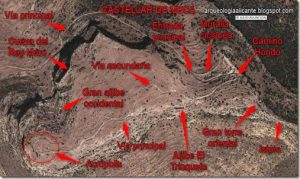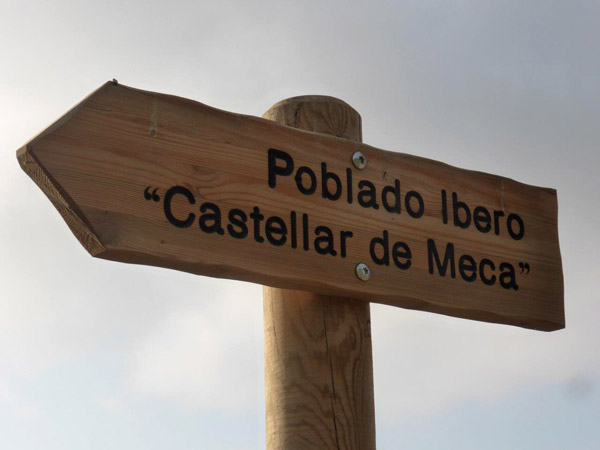The Iberian settlement ‘Castellar de Meca’ (V-II centuries BC), is located in the municipality of Ayora, in the region of ‘El Valle de Ayora-Cofrentes’, on a long hill called ‘Mugrón de Meca’, inside the «Casas de Meca» property.
It has been declared an Asset of Cultural Interest since June 3, 1931 by the Ministry of Culture.
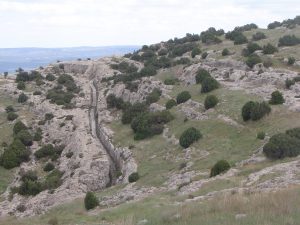
The ruins are considered to belong to an Iberian settlement occupying approximately 15 hectares. At first glance you can see its ancient walls that served as a defense to this population, but also because of the characteristics of the land, they are also part of a natural fortress, standing at 1218 meters above sea level at its most high. It is located on a plateau of the mountain, with a single access, and possibly by the Iberians traced a path, the so-called Camino Hondo (which today still retains important traces of the footprints left by the wheels of the cars, and small cavities, where the beasts that carried their loads put their feet), which united the city-fortress with the plain. From this Iberian period are also the remains of houses excavated in the rock as well as the cisterns.
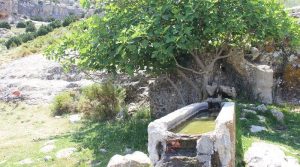
The Iberian city disappeared with the conquest of the Romans, although the Iberian influence was maintained for a time. In the western area there are remains of a Roman tower, there is no evidence that there were architectural elements, although they were found ashlars of various sizes well carved.
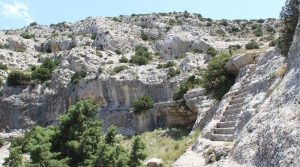
The population was growing and extending on the slopes, on the unused Iberian road, constructing rectangular medieval rooms. It is known that in the fifteenth century the city was deserted, which may be due to the outbreak of Black Death suffered by the area in the mid-fourteenth century.
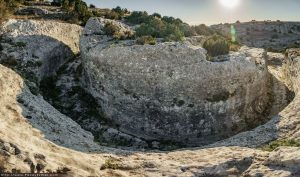
The characteristics of the town suggest that this would be a large store of agricultural products that would explain the access road to facilitate its transport from the plain. The construction of the road and storage systems requires a leader class with the ability to organize resources and manage them effectively. In times of depression due to bad harvests or crises, the defense of the place and its surplus resources stored in good times would be fundamental.
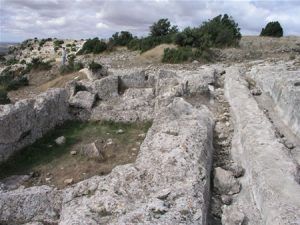
These Iberian ruling classes and a well-organized economic system would be the basis for the development of Iberian culture from the 5th to the 3rd century BC., with its ability to create funerary monuments, rich necropolis, shrines and sculpture, characteristic of the area. The Castellar de Meca would be an important economic center of which only remains its skeleton printed in stone. The scientific excavation of the city would make it clear, definitely, that we are facing one of the main Iberian cities.
